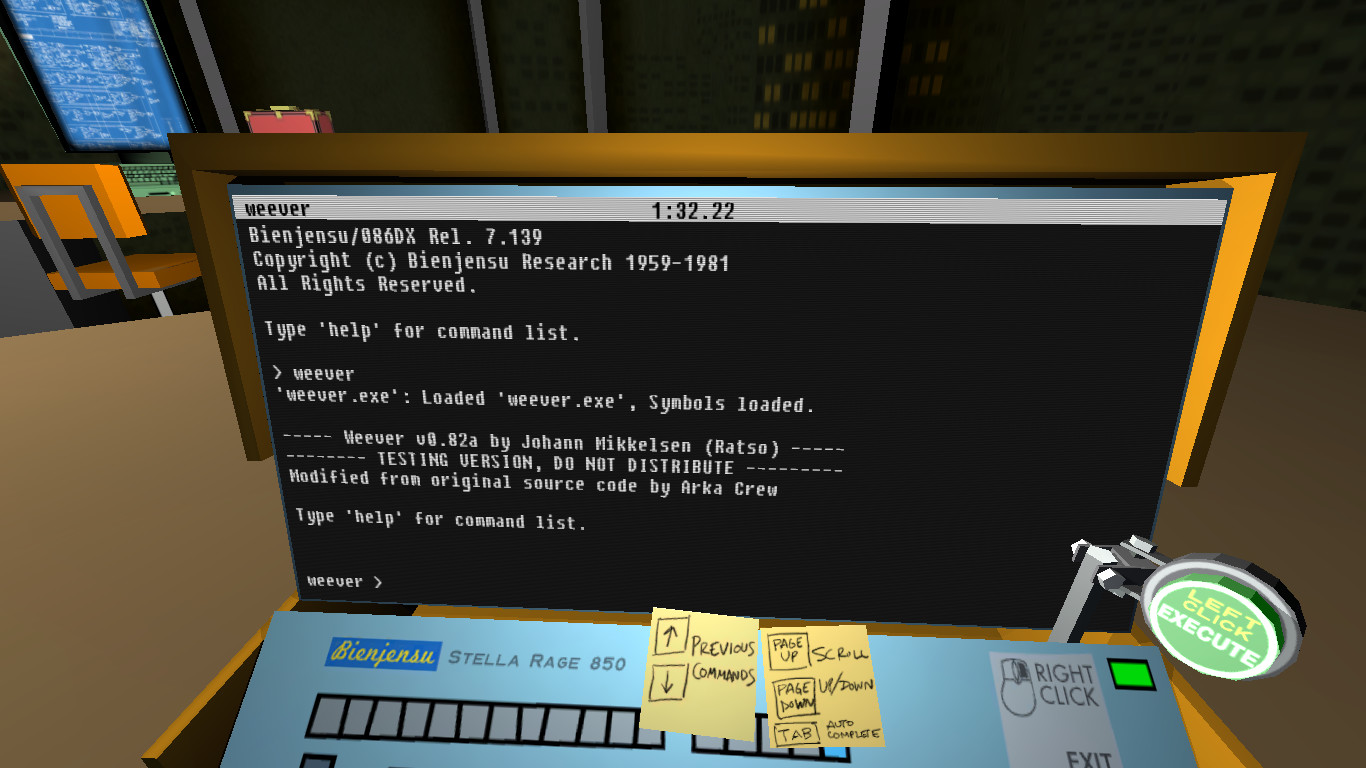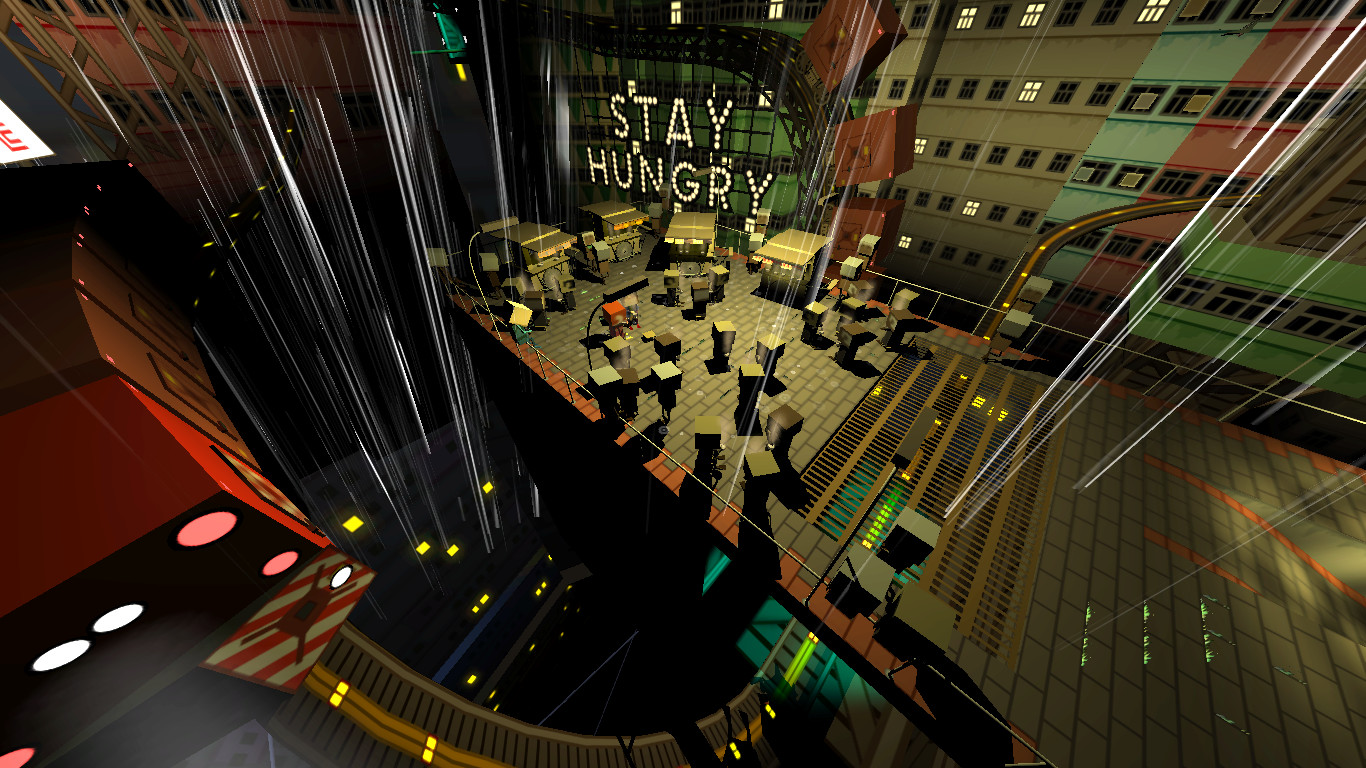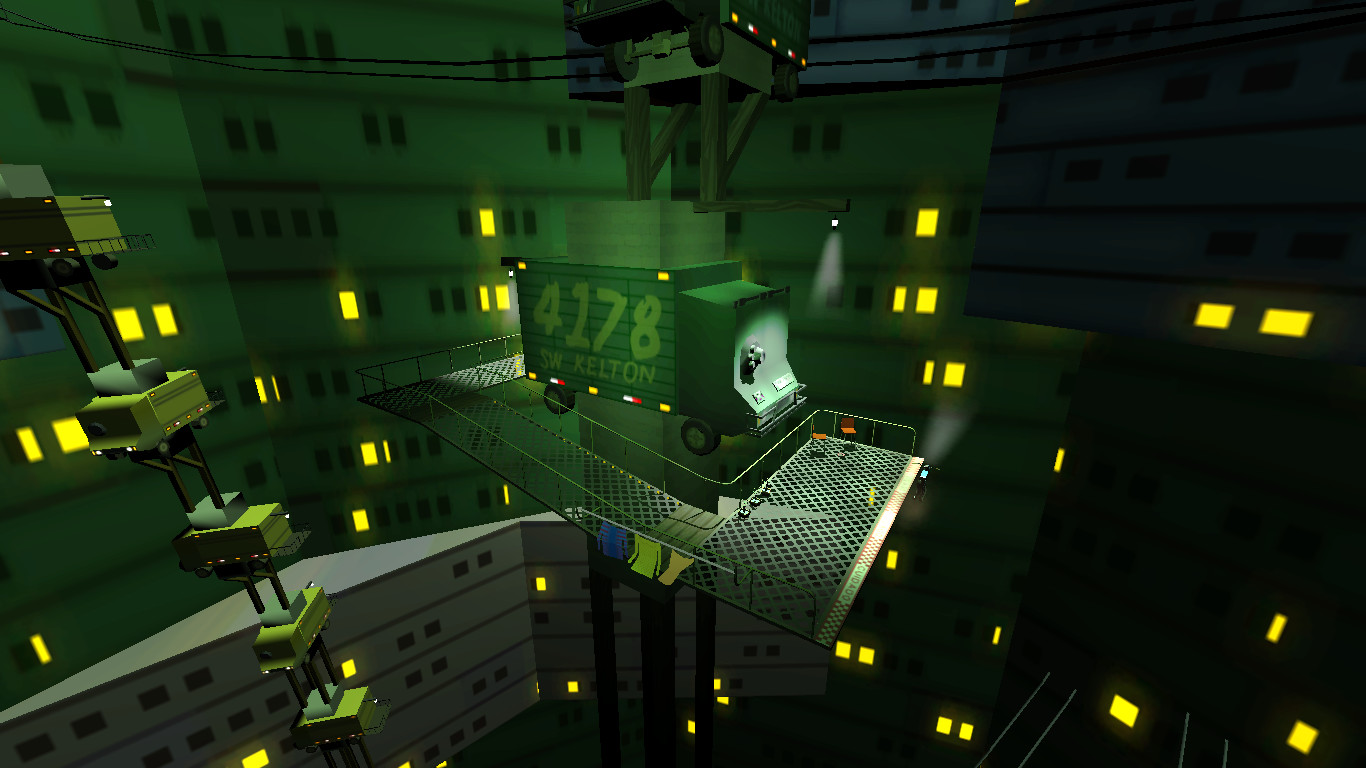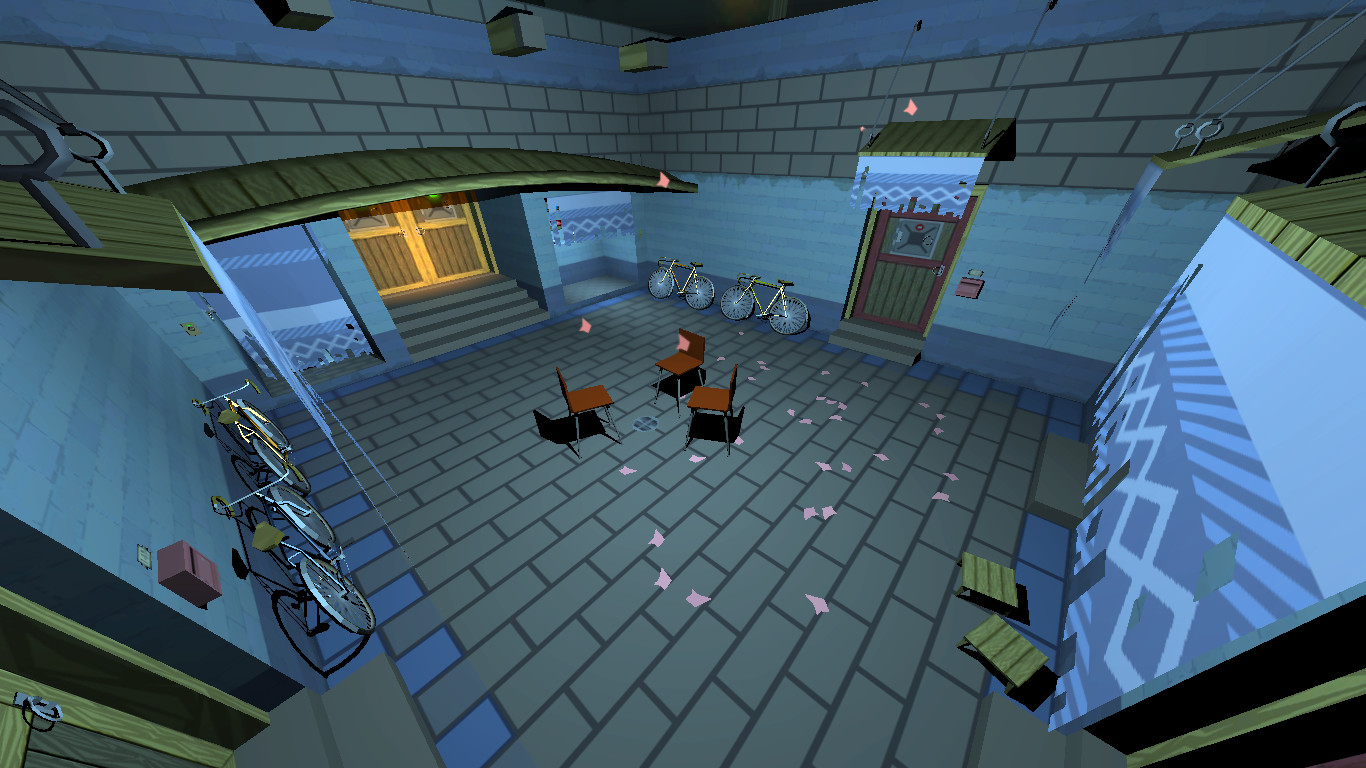Quadrilateral Cowboy Review
Neurofancier
Hacking sucks. It’s slow, tedious, finicky, incredibly risky, and consists mostly of testing vulnerabilities until you find the one software package that the target’s underpaid IT manager hasn’t bothered to update yet. On the list of fun things you can do with a computer, hacking ranks somewhere just below tearing the heatsink off the central processing unit and using the residual thermal paste to brush your teeth. Fortunately video games understand this, which is why whenever hacking is featured as a game mechanic, it almost always takes the form of an unrelated minigame. Fallout 3 makes you play Mastermind, Neon Struct makes you play Breakout, Deus Ex makes you watch a loading bar, and of course, System Shock 2 makes you click on squares in rows until a protocol droid blows up in your face. The upside of this is that you don’t slump in defeat at the first sign of a blinking terminal; the downside is that its resemblance to actual infiltration is so tenuous that you might as well just be asked to roll your face across the keyboard for a few seconds. If only there was a game about hacking that could give us the best of both worlds; the smug sense of being an unstoppable master of arcane computer wizardry, together with puzzle solving that was actually fun, engaging, and completely devoid of sliding blocks.
On a completely unrelated note, here’s Quadrilateral Cowboy.

With the likes of Gravity Bone and Thirty Flights of Loving already under his belt, Brendon Chung has built something of a reputation as an artisan of some of the smartest, densest, most impeccably-delivered bite-sized first-person storytelling experiences under the sun, and it shouldn’t be a surprise to anybody that Quadrilateral Cowboy is an evolution of that tradition. You are one of a trio of ice-cool cyberpunk girls who scrape together enough resources to form a tech startup—or at least, enough to rent out a dingy loft and some server racks—and together you begin working as heist planning contractors, executing audacious break-ins from the comfort of a cyberspace mock-up so that some poor disposable saps can follow your instructions to a T in real life. Armed with a deck, your programming skills, and an ever-growing arsenal of bizarre gadgets, you begin to orchestrate infiltrations at the behest of your shadowy clients, blissfully unaware of the catastrophic repercussions slowly collapsing in around you.
Quadrilateral Cowboy’s world is… special. I know that sounds like a strange angle to come at things from, but when the game goes to such lengths to waft its pungent, exotic scents under your nose, it seems prudent to give it a careful look. It’s a world that started with Neuromancer, looked at the self-absorbed tangle of cyberpunk tropes and aesthetics that had sprouted off it, and promptly chose to run in a completely different direction, off into a strange neo-classical pocket dimension. There’s a juxtaposition here of sorts; of the world we had and the world we thought we were on the brink of, placed side-by-side in a way that’s as comedic as it is curiously fitting. Everything is wilfully, almost defiantly analogue, no matter how anachronistic; VR simulations on cassette tapes, vinyl Walkmans, security drone zeppelins, and a deck that somehow completely immerses you in cyberspace despite ostensibly just having a pair of goggles with little CRT monitors embedded in them. Bits of the world are trapped in that familiar vortex of eighties computer hardware, all chunky and beige with ribbon cables galore, but they’re only there to set up your expectations so the rest of the game can subvert them, constantly delighting with its surreal, impossible, retro-futuristic vision.
It’s this particular pastiche that lets Quadrilateral Cowboy have the puzzles that it does: oddball problems that demand spatial awareness as much as shell scripting skills. By typing strings of commands into your trusty portable deck—which, in true old-school fashion, looks more like desktop computer that was violently disassembled and crammed into a bulky briefcase—you can bypass obstacles, disable security measures, and remotely control your various tools, which get introduced over the course of the game. If you can write a Hello World program without overflowing the stack with a strange, tar-like substance, Quadrilateral Cowboy’s terminal scripting is going to seem pretty Fisher-Price-tier, but it has arguments and methods and semicolons in abundance, which ought to be enough for anybody, really.

Even when you’re typing away with one eye on the camera feed and one eye on your command line, though, it’s hard to shake the feeling that all this hacking is really just an elaborate execution barrier disguising a set of otherwise simple actions. In the overwhelming majority of cases it’s immediately obvious what you need to write and how to structure it, and the actual thinking usually comes down to “how should I time this so a security door doesn’t slam on my toes at an inconvenient moment?” All the pieces are here, in spite of the barebones syntax, but it’s missing that precious spark of creativity. You’ll never combine your functions in new and interesting ways, or even fiddle with them until something unexpected happens; they’re just straightforward tools, with the added inconvenience of having to open up your deck and take your hand off the mouse every time you want to use them.
Back in meatspace, where the effects of your code mingle with your physical obstacles, Quadrilateral Cowboy’s puzzles show their more traditional side, with crates, laser grids, buttons, doors, bounce-pads and the occasional security turret to remind you of the fragility of your pathetic organic frame. It’s the First Person Puzzler Starter Kit in all but name, which ought to lead to some solid brain teasers, but the overarching puzzle design approach feels weak and soggy, like a cardboard box fortress caught in the overnight rain. If this was, say, Portal—not to use an example so old and worn-out that the world’s slobbiest bachelor wouldn’t be caught wearing it as a pair of underpants, but you know how it is—an acceptable gameplay cycle would be to introduce a new puzzle element, teach you how it works, test your understanding of it, and then factor it back into problems that use everything else learned thus far, but Quadrilateral Cowboy is so insistent on staying lean that it never really gets past stage two. When it comes to cool first-person gadgetry, you couldn’t ask for a better teacher than Brendon Chung, but without any kind of follow-through it just feels as if the game is swapping in new toys on a regular basis in the hopes of keeping you distracted, like a wealthy, overbearing uncle. None of it really ties the puzzle elements together until the final, final, last-minute, everything-must-go mission, and even then, it doesn’t deviously interweave them so much as it dumps them in a heap on the floor and calls it a day.

No, puzzle solving isn’t Quadrilateral Cowboy’s strong suit; its source of satisfaction isn’t in formulating a plan, but in unfurling it gracefully, like a fine Persian rug. Execution is such an involved, multi-stage, hands-on process; everything in your arsenal needs to be deployed and configured, not as puzzle pieces but as tools. The game doesn’t treat its missions as abstract problems to be solved in a theoretical perfect space, but as realistic scenarios where all kinds of niggling issues need to be taken into account, like making sure you place your video monitor so that you get a good view of its feed while hacking, or adding in a waiting period to your code to account for the extra time it’ll take you to unscrew the security bolts on a hatch. One time I had to venture into a section of a space station that had violently decompressed—broken window, would you believe?—because the recoil on my remote-controlled turret, which hitherto hadn’t been a problem, had sent it pinwheeling in the zero-gravity environment. You really do feel at times as if you’re carrying out a grand heist, where minute attention to detail is the only thing stopping the operation from folding like a family camping tent beneath a blindly reversing Land Rover.
But however meticulous you might be, you can’t compete with Quadrilateral Cowboy’s own eye for detail. It’s the kind of game that recognises its audience—that is, the kind of person who will stop in the middle of running from a mortar bombardment to take a look at a poster texture on a recently-demolished wall—and tailors itself accordingly, lacing its environments with little one-off hand-crafted touches that give it an all-pervading sense of richness and texture. I spent more time in Quadrilateral Cowboy reading signs, labels and book spines than I did on my last airport layover, not out of any sense of obligation but out of the simple curiosity that arises from knowing that each one is almost certainly going to be different from the last. Most are just little background storytelling titbits, jokes, or even totally pointless fluff—not that that isn’t admirable application of effort in its own way—but in many cases the game cleverly uses them to wrap up things that would otherwise be external to the universe: tutorial messages on the sides of maintenance hatches, keybinds on sticky notes at the top of your monitor, loading screens styled as progress charts or boot sequences. Even your objectives take the form of scrawled notes on the inner leaf of a battered ring-binder operator’s manual, which you can flip through at any time to find pages upon pages of annotated instructions and archaic technobabble. It’s all so madly in love with its own themes, and you can’t help but drink in its passion.

As important as passion is, though, it’s no substitute for a QA team being intravenously fed swarms of caffeine-dusting nanomachines around the clock, which is something Quadrilateral Cowboy could’ve maybe done with here and there. Granted, I can’t imagine it was easy to force the Doom 3 engine to bend over backwards for all this technical trickery without it chucking up its main processing loop in a pool of half-digested event triggers, but the framerate really is astoundingly poor in places, a quality that becomes genuinely problematic when you only have a two second-long window to cross the room and dive into a ventilation hatch before the lasers reactivate. Furthermore, while I appreciate the open-ended nature of some of the puzzles, and the flexibility of the tools the game foists upon you, I couldn’t help wondering from time to time if my solution wasn’t so much ‘thinking outside the box’ as it was ‘clipping through the side of the box and running off before anybody notices’. Am I supposed to be able to post my deck through this window? Should I be able to grab my robot through those bars, or is that what this magnet with no other discernible application is for? Given that the rest of the game appears to have been crafted with a set of jewellers’ tools and a magnifying glass, it’s probably nothing, but it still feels a little scrappy from time to time.
Quadrilateral Cowboy could have been an amazing game; as it is, it’s merely great. It’s a heartfelt love letter to classic Neuromancer-esque cyberpunk that’s stylish and imaginative enough to get a pass as something you immerse yourself in—for the sake of experiencing its vignettes, or its minute world details, perhaps—but despite a lot of exciting ideas, the actual puzzles are a bit of a flop. If you’re looking for that trademark Blendo Games first-person cleverness then rest assured it’s still here, ready to unfurl all manner of memorable moments, but the dazzling, glamourous prospect of performing daring heists with your tech-head wizardry is so much more alluring than the motions you end up going through. But hey, at least there’s a monochrome terminal and a telnet client.
 Comments
Comments











